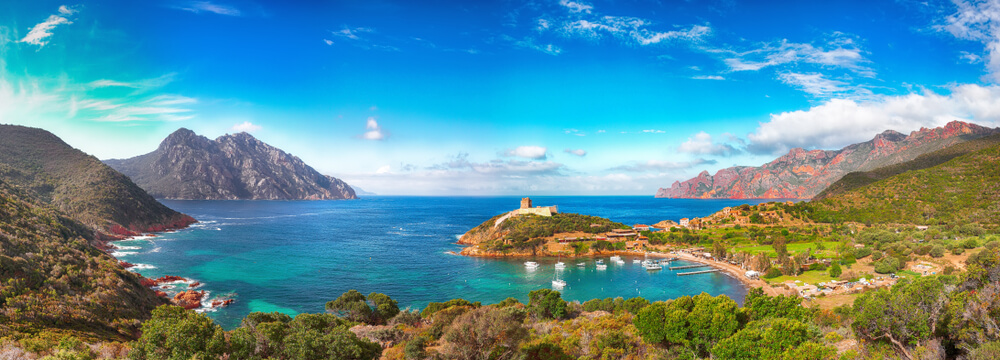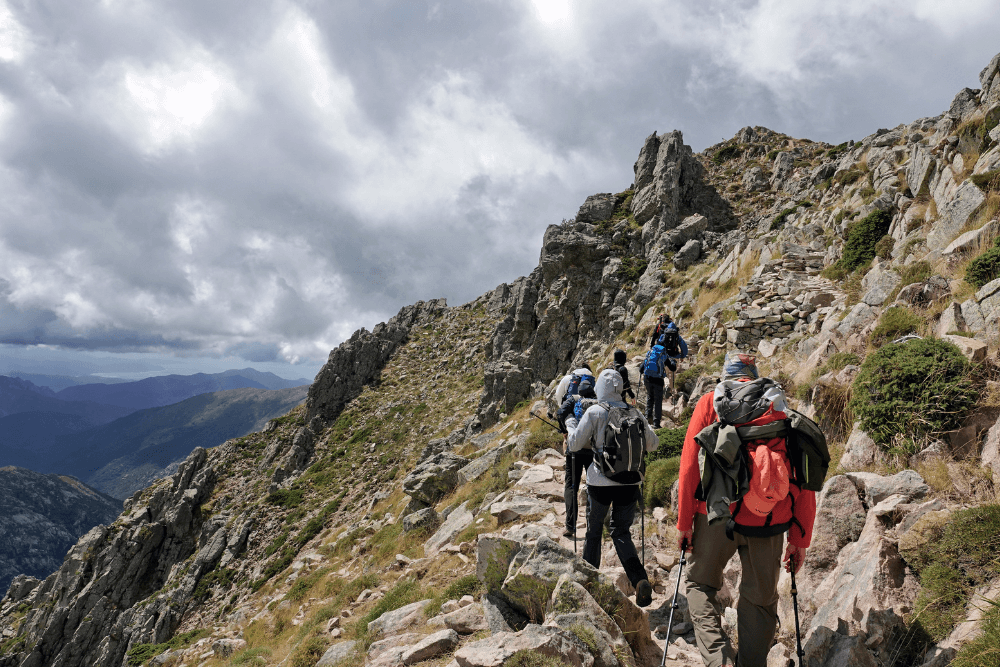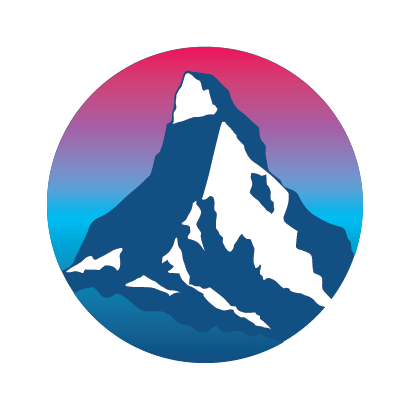
Corsica is perhaps the most unique destination in all of France. Situated off the mainland, this massive island has touring mountains, sand and stone beaches, craggy coastlines, as well as sweeping pastureland and an inland desert. What defines Corsica, other than its culture and traditions which distinguish themselves from standard France, is the island’s massive variety. Small cities, forgotten villages, and an expansive wilderness all await an adventurous tourist after landing on the Corsican coast.
Hiking in Corsica

The experience of hiking in Corsica is defined by how wild the island truly is. Hikers will immediately note that Corsica has real mountains – the island’s highest summit, Monte Cinto, rises to nearly 9000 feet, which is a stark relief to the rest of the Adriatic and Mediterranean summits that rarely break 4000 feet. This substantial mountain range boasts green alps, snow-capped summits, and awe-inspiring cliff faces. Outside of the central mountains, hiking in Corsica will also take you to the no less wild coast, where the island’s pink granite foundation becomes visible. This beautiful rock juts out over inlets in a beautiful contrast to the blue Mediterranean waters. At the end of the day, or maybe even in the middle of a hike, trekkers can enjoy a true Corsican tradition – taking a dip in the sea and sunbathing on the beach!
History of Corsica
The history of Corsica is one of territorial conflict between the major nations of Europe – not a surprise given its key location in the Mediterranean. The first major settlement and development of the island was by Rome and ruins from the Roman era are still visible today. After the collapse of Rome, the island settled into a dark age like the rest of Europe with the dominant cultures being the Vandals and Ostrogoths. Once larger empires and states had once again formed in Europe, Corsica was incorporated into the kingdom of Tuscany as a line of nautical defense against the Moors who were invading Europe from northern Africa. Following the Renaissance, Italy, Spain, and even England would take temporary claim of Tuscany, with Napoleon ending the conflict over the island when he incorporated it into his empire as part of France.
Food and Culture

The Corsican culture is a unique one that is quite distinct from that of French people who live on the mainland – whom Corsicans refer to as “living on the continent.” Visitors may immediately notice that the Corsicans are a bit brusque, preferring to leave tourists to their own devices. This is part confidence in their island, as many believe that visitors will have a great time no matter where they end up on Corsica and part of the independent Corsican spirit. This does not mean that they do not care about showing you the best of their culture and island, just that they would prefer to leave you to your own devices in doing so.
Corsican food is ruled by its cardinal ingredients: local seafood, meats, and cheeses make up much of the bounty of the Corsican table. Often carried by pasta, bread, or casserole, the raw products are the real stars of the show. This is most notable at lunch, where in true Mediterranean style Corsicans will indulge in multi-course meals ending in a glass of wine. Some must-try dishes are agneau corse or Corsican lamb, which is a hearty dish with garlic, rosemary, and potatoes; charcuterie; prawns; langoustine or crayfish; and brocciu, the most iconic Corsican cheese.
Discover this beautiful region on our guided Corsica tour.








Comments are closed.